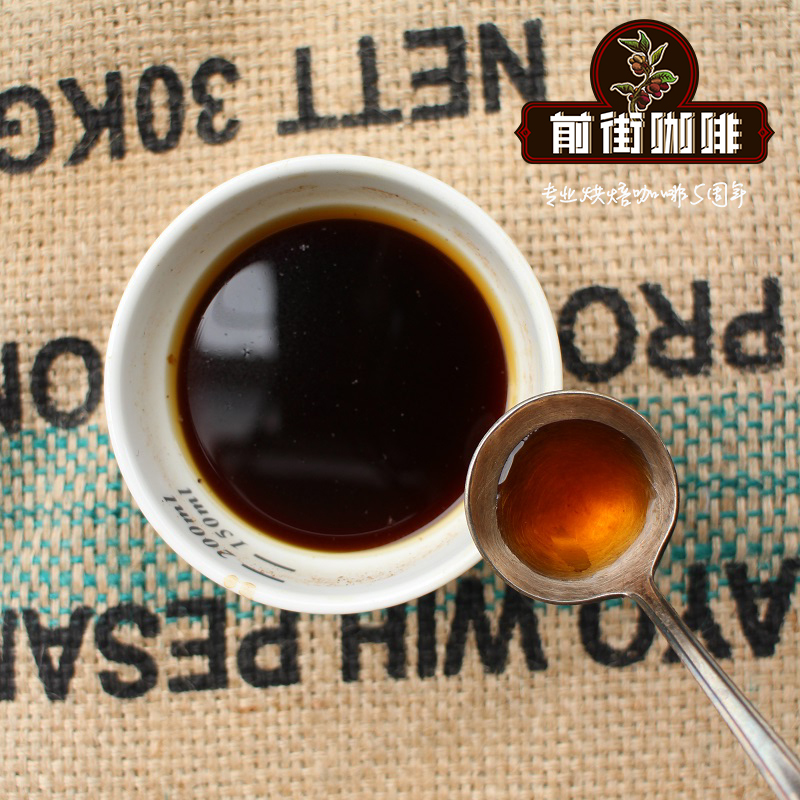How do you drink Mexican coffee? Introduction to the planting History of Mexican Coffee

Professional coffee knowledge exchange more coffee bean information please follow the coffee workshop (Wechat official account cafe_style)
Mexico is one of the largest coffee producers in the world and the largest producer of organic coffee, accounting for 60% of the world's output in 2000. The vast majority of Mexican coffee, especially organic coffee, is grown by small farmers. The southernmost states of Chiapas and Oaxaca. These two states also happen to be the poorest countries in the country, not coincidentally, with the largest number of indigenous residents. Coffee is one of Mexico's most profitable exports, with nearly 500000 small farmers and their families relying on crops to sustain their economy.
Coffee did not reach Mexico until the late 18th century, when Spaniards brought plants from Cuba and the Dominican Republic. Decades later, the process of commercialization began when German and Italian immigrants moved from Guatemala and other Central American countries. In the 1790s, when the first coffee plantations began to appear in the southeastern state of Veracruz, Spanish colonialism was deeply ingrained in the region; nearly two and a half centuries ago, the Aztec empire had been conquered-and destroyed by disease. Mexico's vast mineral deposits mean that coffee and agriculture have for years taken a back seat in mineral exports such as gold and silver (and later oil, now the biggest contributor to the Mexican economy). Unlike Caribbean islands or what later became "
Although independence from Spain has improved Mexico's rural population, factionalism, civil war and international conflicts with Texas, France and the United States have deprived the country of the stability needed to develop or incite social reforms over the next 70 years. During this period, however, coffee cultivation in southern Mexico began to flourish in plantations. The border dispute with Guatemala led to the first extensive land registration in the 19th period in the 1960s. This allows a small number of wealthy Europeans to buy large amounts of previously "unregistered" land and feel safe investments in nurseries and long-term cultivation. Local landowners and politicians gained a large degree of autonomy and slowly began to force small farmers to further enter the mountains to protect their land
It was only after the Mexican revolution that small farmers began to seriously invest in coffee cultivation. The land reform in the post-revolutionary period provided thousands of small plots of land for indigenous groups and workers. Labor laws, such as Ley De Obreros in 1914, released many of the county's "serfs" and indentured servants-many of whom worked on coffee plantations-and they brought skills and seedlings back to their communities to cultivate coffee. The rise of PRI (Institutional Revolutionary Party) in the early 20th century also witnessed the development of INMECAFE in 1973-the Mexican National Coffee Institute. The government, which shows a little populism and development thinking, believes that coffee cultivation is a valuable contribution to the national economy, not only to provide funds for rural social development.
INMECAFE was developed to support coffee cultivation by small farmers. The organization provides technical assistance and credit to farmers, guarantees purchase, provides transportation to the market, and works with ICA to sell coffee on the international market. ICA is a partnership between London-based coffee producers and consumers aimed at stabilizing the coffee market. They succeeded for nearly two decades through agreements, quotas and subsidies. )
Typical exquisite Mexican coffee is similar to a high-quality pale wine-BODY is delicate, with a pleasant finish and obvious acidity. If you drink black coffee and like soft sour notes, you will like these typical Mexican coffee. However, some Mexican coffee, especially from the Chiapas region, can even compete with the best Guatemalan coffee in complexity.
Mexico is also the origin of many certified organically grown coffee. These are usually quality coffee certified by various independent monitoring agencies and can be grown without the use of pesticides, fungicides, herbicides or other harmful chemicals.
Qianjie Mexican Coffee recommends hand brewing parameters:
V60ap90 ℃ / 1 15 / time two minutes
Important Notice :
前街咖啡 FrontStreet Coffee has moved to new addredd:
FrontStreet Coffee Address: 315,Donghua East Road,GuangZhou
Tel:020 38364473
- Prev

How to drink Mexican hand-made coffee? What is the best coffee in Mexico? Mexican coffee
Professional coffee knowledge exchange more coffee bean information please follow the coffee workshop (Wechat official account cafe_style) Central and South America is the best producer of coffee, coffee is known for its mild, bright, elegant sour taste, almost all mixed coffee recipes can not do without Latin American coffee beans. Countries of origin in the region include Jamaica, Brazil, Colombia, Guatemala and Mexico.
- Next

What is the best coffee in Mexico? Characteristics of Mexican coffee how to drink Mexican hand-made coffee
Professional coffee knowledge exchange more information about coffee beans Please follow the coffee workshop (Wechat official account cafe_style) Coffee first arrived in Mexico in the late 18th century, introduced by Spanish settlers. The county produces a considerable amount of coffee these days, although its global status as a coffee producer has been greatly reduced due to the entry of non-traditional Arabica coffee producers.
Related
- Detailed explanation of Jadeite planting Land in Panamanian Jadeite Manor introduction to the grading system of Jadeite competitive bidding, Red bid, Green bid and Rose Summer
- Story of Coffee planting in Brenka region of Costa Rica Stonehenge Manor anaerobic heavy honey treatment of flavor mouth
- What's on the barrel of Blue Mountain Coffee beans?
- Can American coffee also pull flowers? How to use hot American style to pull out a good-looking pattern?
- Can you make a cold extract with coffee beans? What is the right proportion for cold-extracted coffee formula?
- Indonesian PWN Gold Mandrine Coffee Origin Features Flavor How to Chong? Mandolin coffee is American.
- A brief introduction to the flavor characteristics of Brazilian yellow bourbon coffee beans
- What is the effect of different water quality on the flavor of cold-extracted coffee? What kind of water is best for brewing coffee?
- Why do you think of Rose Summer whenever you mention Panamanian coffee?
- Introduction to the characteristics of authentic blue mountain coffee bean producing areas? What is the CIB Coffee Authority in Jamaica?

